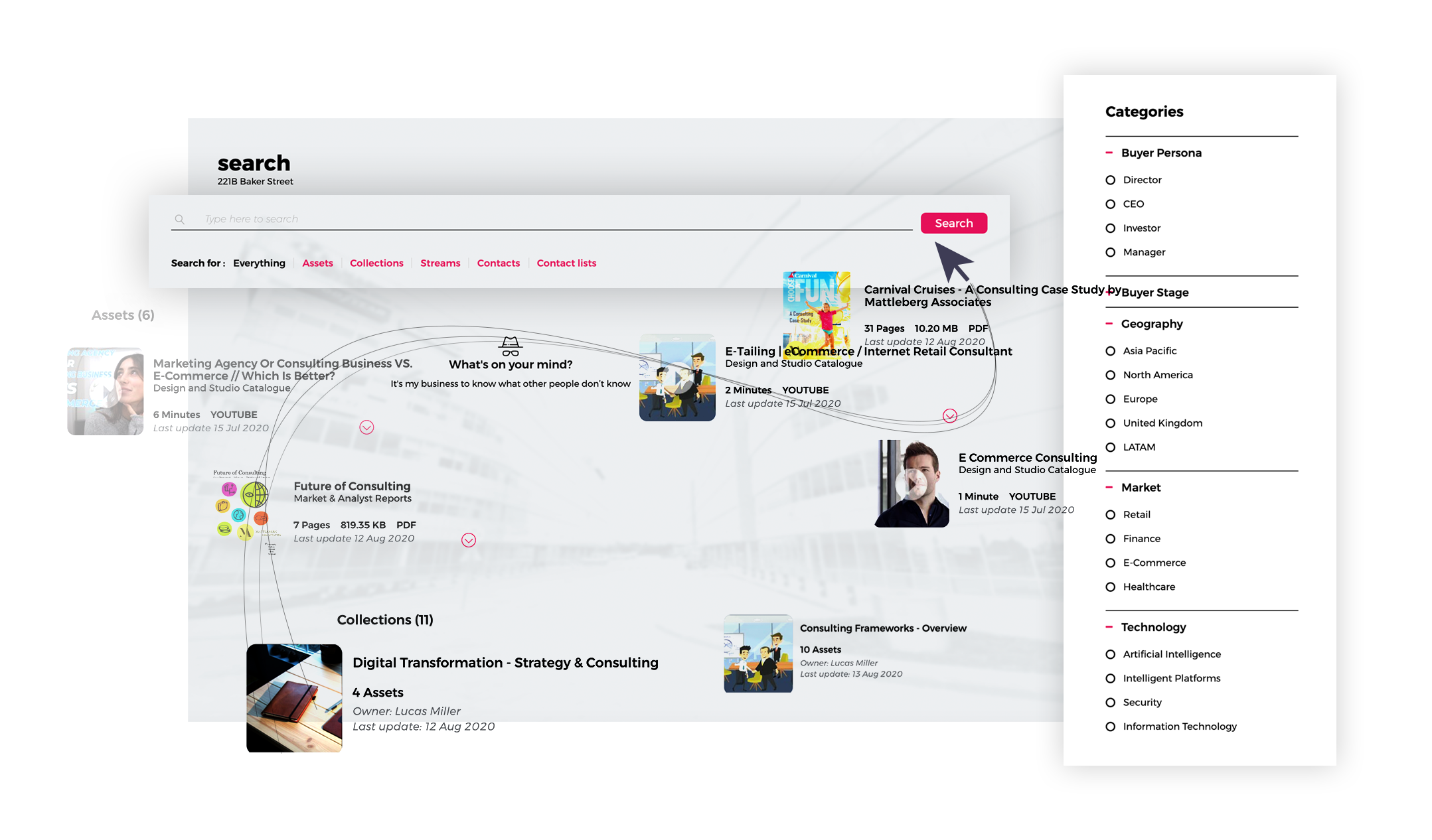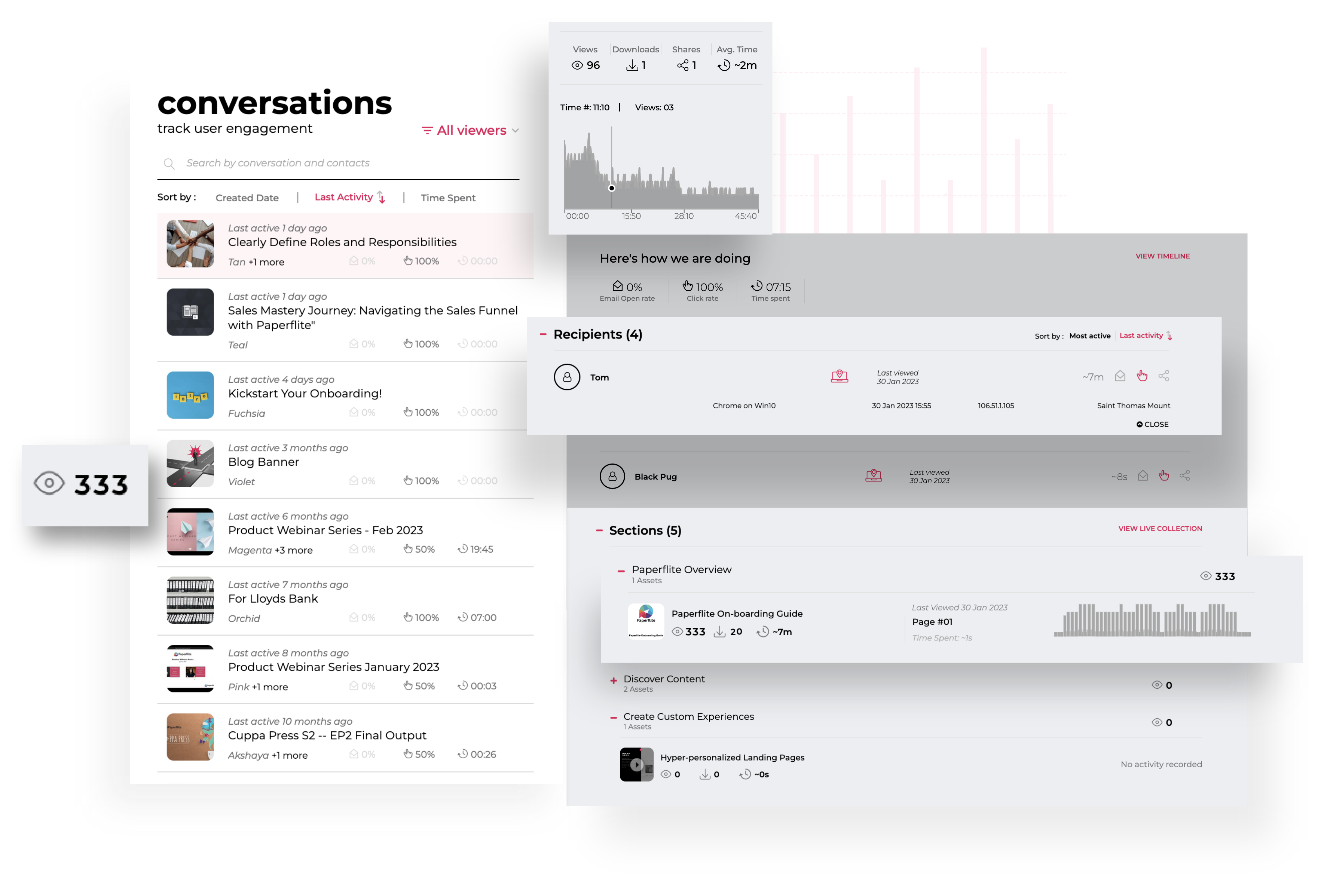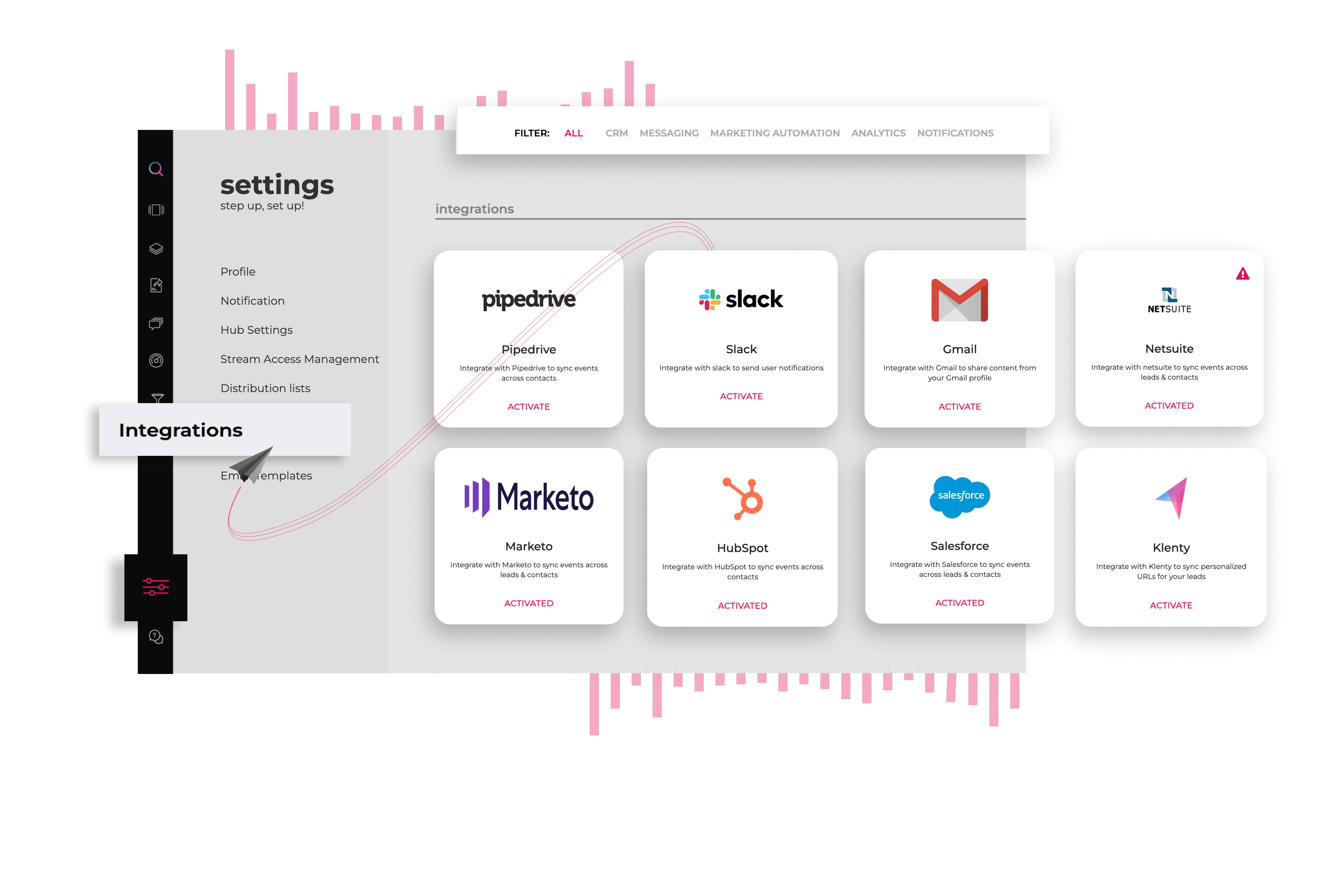What is Field Sales Enablement? and Why do you Need It?
The success of any field sales team lies in their ability to connect with customers, close deals, and stay efficient while working remotely. However, without the right support, tools, and strategies, even the most experienced reps may struggle to reach their full potential.
In this blog, we'll explore the essentials of field sales enablement and how it can unlock greater success for your sales team.
Table of Contents
- Defining Field Sales Enablement
- Challenges Faced by Field Sales Teams
- How to Implement Field Sales Enablement
- Measuring the Impact of Field Sales Enablement
- Paperflite as Your Field Sales Enablement Solution
What is Field Sales Enablement?
Field sales enablement involves empowering outside sales reps with the resources, tools, and content they need to sell effectively, no matter where they are. Unlike inside sales teams, field sales reps work remotely and face unique challenges in accessing up-to-date product information and staying connected with the office.
What works for inside sales—direct access to product teams and internal data—does not work for field teams who rely on mobile platforms for updates and collaboration.
Challenges Faced by Field Sales Teams
Field sales reps have a tough job. They are expected to meet clients, close deals, and represent the company across various regions—all while working outside the traditional office environment. However, several challenges can hinder their performance if not addressed. Below, we break down some of the major challenges field sales reps face and how field sales enablement can resolve them.
Access to Resources

Challenge: Unlike inside sales reps, who have easy access to company resources, field sales reps may struggle to obtain the latest sales materials, product updates, or customer data while on the go.
Solution: Utilize a cloud-based sales enablement platform that stores all necessary resources, including product information, sales collateral, and customer data. This platform should be accessible from any device, enabling field reps to retrieve and use the most current resources during client interactions, even offline.
Impact: With instant access to up-to-date resources, field reps can provide accurate information during client meetings, increasing their credibility and effectiveness. This leads to higher client satisfaction and a greater likelihood of closing deals.
Communication Barriers

Challenge: Field sales reps often work in isolation, away from the office and team support. This can lead to difficulties in accessing real-time information, getting answers to urgent questions, and maintaining consistent communication with the rest of the sales team.
Solution: Implementing an always updated and highly collaborative tool as part of the field sales enablement strategy could help with this. Providing sales reps with communicative tools, in-mobile CRMs, and cloud-based document-sharing platforms, or maybe a tool that has all this combined in one, this will ensure that reps can easily communicate with their team, access up-to-date information, and receive immediate support regardless of their location.
Impact: Improved communication ensures that field sales reps can respond quickly to client inquiries, make informed decisions on the spot, and maintain alignment with the sales team. This leads to faster deal closures, fewer missed opportunities, and enhanced team cohesion.
Technology and Tool Integration

Challenge: Field sales reps require tools that are mobile-friendly, easy to use in diverse environments, and capable of functioning offline. Integrating these tools into the existing tech stack can be challenging, especially when ensuring they sync properly with central systems like CRMs.
Solution: Implement field sales enablement solutions that are designed for seamless integration with existing CRM systems and other sales tools. These solutions should offer offline functionality, ensuring that reps can continue working effectively without interruptions, and automatically sync data once a connection is re-established.
Impact: Seamless tool integration ensures data accuracy and continuity, reducing errors and ensuring that the entire sales process runs smoothly. This results in better sales tracking, more accurate forecasting, and improved overall efficiency for the field sales team.
Training and Skill Development
Challenge: Field sales reps may not have the same access to ongoing training as their inside counterparts, making it difficult to stay current on new products, sales techniques, or market trends.
Solution: Provide mobile-accessible training modules through the sales enablement platform. These modules can include video tutorials, interactive content, and regular updates, allowing reps to complete training at their convenience, whether they are in the office or on the road.
Impact: Continuous training ensures that field sales reps remain knowledgeable and confident in their interactions with clients. This leads to improved sales performance, as reps can effectively pitch new products and address client concerns with up-to-date information.
Adapting to Diverse Client Needs
Challenge: Field sales reps often deal with a wide variety of clients in different regions, each with unique needs and preferences. Adapting sales approaches to meet these diverse demands while staying aligned with the overall strategy can be complex.
Solution: Use customer segmentation and personalized content tools within the enablement platform. These tools help reps tailor their sales strategies and communications to the specific needs of each client segment while ensuring alignment with the broader sales strategy.
Impact: Tailored sales strategies lead to more relevant and compelling client interactions, increasing the chances of success. This approach enhances customer satisfaction, strengthens relationships, and drives higher conversion rates.
How to Implement Field Sales Enablement
Implementing field sales enablement involves several key steps to ensure the strategy is both effective and sustainable. Here's how you can implement it:
-
Assess the Current State of Field Sales: Start by understanding where your field sales team stands today. Evaluate the current challenges they face—whether it’s lack of access to real-time information, inefficient communication, or inadequate tools. This foundational assessment helps you pinpoint gaps that field sales enablement can bridge.
-
Define Clear Objectives: Once you have identified the challenges, set measurable goals that target those specific issues. For example, if communication is a major hurdle, a clear objective could be improving response times between the field team and HQ. Establishing objectives like reducing deal closure time or increasing territory coverage creates direction for your strategy.
-
Choose the Right Tools and Technology: With objectives in place, the next step is selecting the right sales enablement platform that supports your goals. This platform should integrate seamlessly with your CRM, be mobile-friendly for on-the-go access, and include offline capabilities to ensure reps have critical information at their fingertips, regardless of connectivity.
-
Develop and Centralize Sales Resources: Now that the tools are in place, focus on centralizing your sales materials. A key feature of any good enablement strategy is ensuring reps have one-stop access to the most current resources—whether it’s product brochures, pricing sheets, or case studies—through a centralized, easily accessible platform.
-
Implement Continuous Training Programs: Equip your field sales reps with ongoing training to help them stay sharp. Using the same platform for sales resources, introduce mobile-friendly training modules so reps can keep up with product updates, new sales techniques, and market trends as they navigate their day-to-day tasks.
-
Enhance Communication and Collaboration: With training in place, the next focus is strengthening communication. Introduce collaboration tools that allow field sales reps to easily communicate with HQ and share updates with the broader team. This keeps everyone on the same page and improves response times, ultimately aligning the entire sales effort.
-
Optimize Territory Management: As reps are now more connected and better trained, they can shift their focus to maximizing efficiency in managing their territories. Use data-driven tools that provide insights on client coverage, help optimize routes, and assist with scheduling, ensuring reps spend more time selling and less time traveling.
-
Monitor Performance: Finally, to keep the strategy sustainable and ensure continuous improvement, use analytics to monitor the success of your field sales enablement efforts. Track performance against your defined objectives, gather feedback from reps, and refine the strategy as needed to maintain high efficiency and effectiveness.
How to Measure the Impact of Field Sales Enablement
To ensure your field sales enablement strategy is effective, track these key metrics:
Shortening sales cycles
The shortening of sales cycles shows the speed at which field sales enablement is becoming effective.
The number of meetings required to convert a client should drop and unplanned travels will reduce. Field sales enablement helps the company understand which part of the sales process causes the most delay and fix it.
Revenue growth and quota attainment
Field sales enablement helps attain quotas faster with less time wasted on follow-up and keeping track. A seamless field sales enablement will help narrow the sales funnel and effectively target customers. Increased efficiency in training will make salespeople better consultants to client’s issues. When they are speaking directly to the customer with the right tools they can capture the requirements better, leading to improved sales.
Faster onboarding and effective training
Onboarding time for new joiners will go down. New joiners will be able to contribute sooner as their training is completed faster. Tracking the training time, courses completed, and quizzes taken will give an idea of how field sales enablement has made in-house learning smoother. Field sales enablement will also reduce attrition as salespeople will be able to achieve better work-life balance.
Customer retention rate/Churn rate
CRR is an effective method to see if the customer can relate to the sales team easily and if the product is adding value to their business. This shows if the territory has been managed accurately and if the salesperson can build a fruitful relationship with the client. Increased retention shows the customer has more trust in the product and is willing to explore more. Field sales enablement should help salespeople to nudge clients to get more dependent on the tool.
Cross-selling/Upselling possibilities
An increase in cross-selling or upselling opportunities shows that field sales enablement is able to keep the customer wanting to come back for more. This goes hand in hand with the retention rate. With new tools, better training, and seamless processes, your sales team is now able to increase the value per client.
Paperflite as your field sales enablement tool:
As a sales enablement tool Paperflite, provides on-the-go access to a centralized content library, ensuring reps always have the latest materials at hand, even offline. Customizable content hubs allow reps to tailor content for clients or territories, enhancing personalization.
Real-time engagement insights help reps track how clients interact with shared content, enabling more effective follow-ups. Seamless CRM integration keeps reps organized and ensures accurate, up-to-date client records, while efficient content sharing capabilities streamline interactions with multiple stakeholders across different locations.
Conclusion:
Field sales enablement is more than just equipping your reps with tools—it's about creating a cohesive strategy that enhances every aspect of their work, from communication and resource access to training and territory management.
By systematically assessing your team’s needs, setting clear objectives, and integrating the right technology, you ensure that your field sales team operates at peak efficiency. Continuous improvement, through training and performance monitoring, solidifies these efforts, making your sales process more agile and effective.
Ultimately, a well-executed field sales enablement strategy empowers your reps to close more deals, build stronger client relationships, and drive sustainable business growth.
